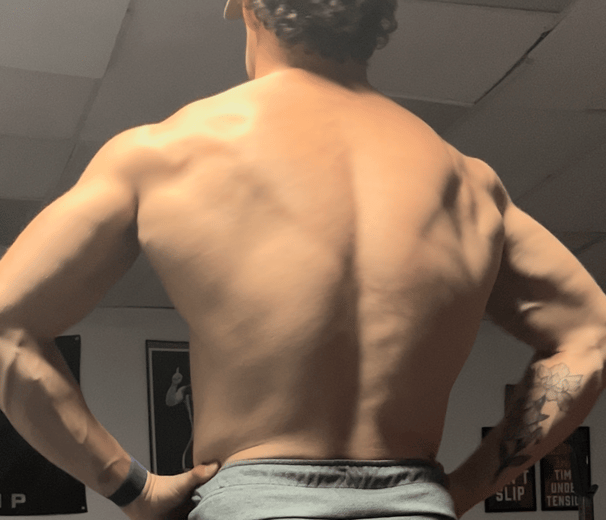Bodybuilding for Athletes
Is being jacked important for sport performance? We certainly think so. Read down below to discover why you should incorporate hypertrophy work into your training...


Think of your favorite athlete... regardless of their sport, chances are they're rocking an impressive physique. Now I don't mean just football players or Olympic throwers, even your favorite runner is probably diced to the gills. The reality is that while looking good doesn't equal impressive physical performance, it certainly is important for the vast majority of sports to be either lean, jacked, or both. Bodybuilding training (ie. hypertrophy training) produces increases in lean mass, general strength, and resistance to injury. Increases in lean mass positively affect injury resistance by means of improving joint stability. Furthermore, resistance training increases bone mineral density which provides greater structural integrity to the bone preventing fractures. Increases in muscle mass (via increased cross-sectional area of muscle) increases strength. Simply put, having more muscle makes you stronger and makes you less likely to suffer an injury. Having a greater ratio of lean mass to fat mass improves endurance as well. This is where we see our favorite runner's physique shine. An athlete like Jakob Ingebrigtsten isn't carrying a ton of muscle, but he sure as hell is lean. For athletes in sports with an endurance component, such as middle and long distance runners, it is imperative to remove excess fat that will weigh you down.
Why is Bodybuilding Training Important?
When to Include Bodybuilding Training?
For most athletes, you’ll know that time and energy is limited and any extra time spent in the gym will have a cost to pay in terms of fatigue. This means it is crucial that you only do any considerable hypertrophy training in your off-season. This will enable you to spend more energy in the gym building muscle, without negatively impacting your sport specific training. Think of hypertrophy training as preparation for future training. It's an investment in your physical body that will enable you to train harder and for longer once sport specific training resumes. If you're a football player, you probably want to ramp up your gym work in the late winter and spring to prepare you for summer football practice. If you're a runner or cyclist, plan your hypertrophy sessions anywhere from 24 to 20 weeks removed from your race and start to phase them out right around 12-8 weeks out. We will go more in detail on how to do this later.


How to implement it?
Now this is the meat and potatoes of this article. Depending on your sport, you will have different needs in terms of whether you need to build more muscle mass or reduce fat mass. In general, sports that require greater levels of strength and power will benefit from larger amounts of muscle tissue compared to endurance sports. It is also important for you to determine where you need to develop that muscle. To stick with our current examples, if you're a runner you will likely want to focus on primarily lower body development. Athletes who play football or basketball will need to focus more so on developing the entire body. In terms of sessions, we would recommend that you spend as many sessions in the gym working on hypertrophy as you can recover from considering that you also will still be training for your sport in some capacity. This will likely be anywhere from 2-4 sessions per week, but there are many training frequencies that work. Depending on how many sessions you spend in the gym, you will need to pick a split that complements that. For those of you opting for less sessions, we recommend training full-body (hitting all the major muscle groups). If you are coming into the gym more often, something like an upper-lower split will work well. As a general recommendation, train each muscle group close to failure (no more than 3 reps shy of failure) for 10-20 working sets per week. This will depend on your recovery capacity. If you find that 10 sets of chest per week leaves you supremely sore and not well recovered before your next session, then consider bumping that number down. However, if you find that 10 sets per week of chest barely leaves you sore and you’ve recovered days in advance of your next chest session, then add some sets. It is also good to consider that if you are training less often you will need to perform fewer total sets per week since there is a limit to how many productive sets you can squeeze into one session; a good ballpark number would be 6-8 sets per muscle group. As for the reps per set, research has given us a pretty wide range to work with. We recommend anywhere from 8-25 reps for any exercise in general.
To summarize:
Determine which muscle groups you want to bring up
Perform 10-20 working sets/week/muscle group
8-25 reps/set on any given exercise
Aim to train each muscle group at least 2 x week
Take each set close to failure (no more than 3 reps shy)
Perform your hypertrophy training during you off-season and reduce gym sessions down to maintenance levels during your sport's season.


Main Takeaways
Incorporating some bodybuilding training into your off-season training plan is a great way to get that edge over the competition. Bodybuilding training will stack muscle on your frame and improve your lean mass/fat mass ratio which will allow you to improve your 1) general strength, 2) injury resistance, 3) overall work capacity and endurance. This should serve as a very general structure to formulate your off-season bodybuilding training. As always, having a coach is the best possible way to ensure you get the most out of your strength and conditioning! If you would like more information, please scroll through all of our available articles, or sign up for remote coaching today on our website!